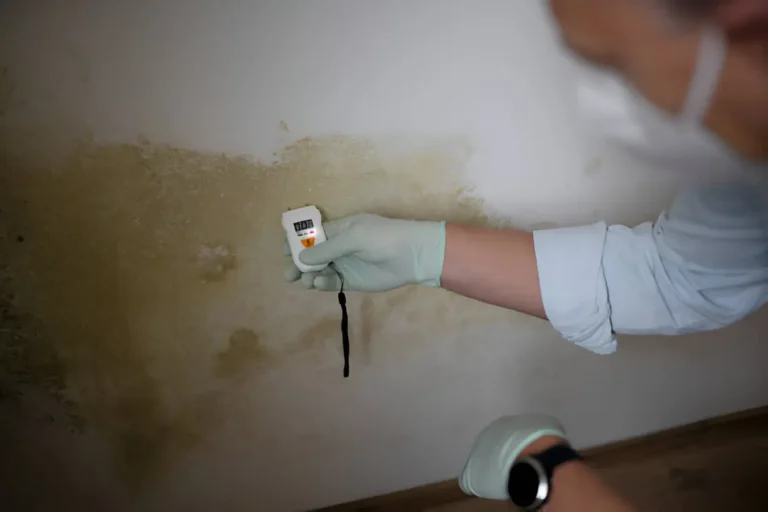Mold is one of those problems most homeowners hope never to deal with. It often lurks silently behind walls, under floors, or in the attic, growing in dark, damp corners until it becomes a major issue. What begins as a faint musty smell can quickly become a full-blown infestation with real consequences, not just for your home, but for your health.
Mold remediation isn’t just about cleaning up unsightly patches. It’s about protecting the air you breathe, preserving the integrity of your structure, and avoiding costly repairs down the road. That’s why understanding the full remediation process, from the first signs of trouble to post-removal precautions, is essential for any property owner. Whether you’re dealing with recent water damage or a lingering mold problem, working with specialists like the san diego inspectors company ensures you’re not cutting corners when it matters most.
Step One: Identifying the Root of the Problem
Before you can fix a mold issue, you have to find it. That might sound obvious, but mold doesn’t always show itself on the surface. Many homeowners only discover a problem after suffering allergy-like symptoms indoors or noticing unexplained dampness.
Inspections play a crucial role in this stage. Using specialized equipment like moisture meters, infrared cameras, and air quality tests, professionals are able to pinpoint where the mold is hiding, and more importantly, why it’s there in the first place. Mold always needs moisture to grow, so whether it’s a leaky pipe, poor ventilation, or past flood damage, the root cause must be addressed alongside the mold itself. Otherwise, the problem is likely to come back stronger.
Step Two: Creating a Safe and Controlled Work Zone
Once mold is confirmed, remediation begins, not with a scrub brush, but with containment. Mold spores are extremely lightweight and can spread through the air with minimal disturbance. Simply walking into a contaminated room or turning on the HVAC system can push spores into new areas of your home.
That’s why certified professionals treat mold like hazardous material. They isolate the affected space using plastic sheeting, negative air pressure machines, and HEPA filtration units. This creates a controlled environment that protects the rest of the property during cleanup. Protective gear is worn at all times, and each step is taken with precision to avoid cross-contamination.
Thoroughness is everything at this stage. Services like risk free serv water damage repair of san diego, ca take every precaution to prevent the mold from spreading, ensuring that remediation isn’t just effective, it’s safe for your entire household.
Step Three: Removing Mold the Right Way
Mold remediation is not a one-size-fits-all process. The method used depends on the material that’s been infected and the extent of the damage. Porous materials like drywall, insulation, and carpeting often need to be removed and disposed of completely, as mold can root itself deep into the fibers. Non-porous surfaces like metal and glass, on the other hand, can usually be cleaned and disinfected with EPA-approved fungicides.
The removal process also involves drying out the affected areas with industrial-grade dehumidifiers and air movers. If moisture is still present, the mold will return, sometimes faster than before. That’s why remediation experts go beyond cleaning: they eliminate the conditions that allowed mold to thrive in the first place.
Step Four: Prevention Is the Best Protection
Even after the mold is gone, the job isn’t over. Remediation professionals will often recommend structural repairs or upgrades to reduce the chances of recurrence. This could include waterproofing basements, improving ventilation in bathrooms, or replacing old windows that allow condensation to build up.
Preventive measures can also be as simple as installing a dehumidifier or regularly checking for leaks in plumbing. Routine maintenance plays a massive role in keeping your home mold-free, especially in areas with high humidity or seasonal rainfall.
Equally important is education. Homeowners who understand how mold grows are better equipped to catch early signs and respond before the situation escalates. By staying informed, you reduce the risk of future infestations and the costly repairs they bring with them.
Step Five: Final Clearance and Peace of Mind
Reputable mold remediation companies don’t consider the job finished until they’ve verified that the space is safe. This usually involves post-remediation inspections, air quality testing, and visual confirmation that no mold remains. You should receive a clearance report or documentation showing that remediation was successful, a valuable resource if you’re planning to sell or insure your home.
This last step might seem small, but it’s your assurance that everything was done properly. Mold isn’t just a stain on your wall; it’s a sign of a deeper issue. Addressing it thoroughly and professionally is the only way to move forward with confidence.
A Problem You Can’t Afford to Ignore
Mold remediation isn’t just a cleanup job; it’s a vital investment in your home and health. While it’s tempting to treat visible mold as a surface-level issue, the risks of improper removal are too high. From spreading spores to lingering health problems, cutting corners can make things worse.
The solution lies in working with trusted experts who approach mold with the seriousness it deserves. From inspection and containment to removal and prevention, every step matters. Your home deserves that level of care, and so do you.
Read more: Sealing the Deal: From Leaks to Long-Term Pipe Security
Mastering Precision: How Modern Structural Removal Is Changing the Game
Behind the Walls: The Hidden Craft of Power and Data That Keeps Modern Life Flowing
